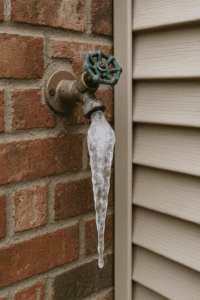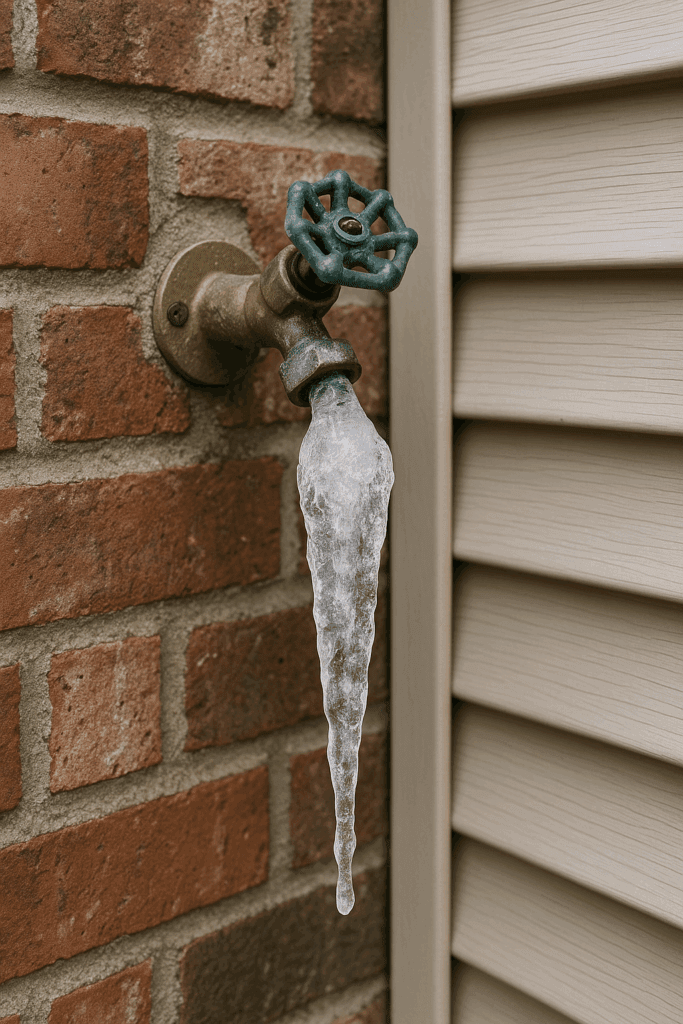
As the days grow shorter and the temperatures drop, it’s that time of year again – winter is on its way. While you might be thinking about cozy fires and warm sweaters, don’t forget that your home’s plumbing also needs some attention to brave the chilly months ahead. Welcome to Green Country Plumbing’s ‘Tulsa’s Winter Plumbing Guide’ on how to prepare your home’s plumbing for winter, ensuring a snug and worry-free season.
Step 1: Insulate Exposed Pipes
Winterizing your plumbing starts with protecting your pipes from freezing temperatures. Insulating exposed pipes is an effective way to keep them warm. You can use foam pipe insulation or heat tape, both readily available at hardware stores. Wrap it snugly around pipes in unheated areas like basements, garages, or crawlspaces. This simple step will help prevent frozen pipes and potential disasters.
Step 2: Seal Leaks and Cracks
Inspect your home for any leaks or cracks that might allow cold air to infiltrate. Caulk around windows and doors, and seal any gaps or holes in your walls and foundation. This not only keeps your plumbing warmer but also reduces your heating bill.
Step 3: Disconnect and Store Outdoor Hoses.
Before the first frost arrives, disconnect garden hoses and drain any residual water. For Tulsa, this is usually around October 30 so it’s best to plan for a first frost in mid-October to be safe. Store hoses in a shed or garage. If you have outdoor spigots cover with frost covers purchased from a hardware store to prevent freezing.
For sprinkler systems, it is best to use a professional to winterize your system properly. Here the basic steps to winterize a sprinkler system if your home has one.
- Turn off the water to the sprinkler system and turn the valves off at the backflow prevention device.
- Turn off the electronic timer.
- Drain the water to the system.
- Cover above ground components. This might include the main shut-off valve, any exposed pipes or backflow preventers. Wrap in foam covers or insulation tape.
Step 4: Service your Water Heater
Your water heater works harder during winter. Give it some attention by calling Green Country Plumbing to do annual maintenance in the fall. Your Tulsa plumbing company can flush and remove sediment buildup, improving it’s efficiency. If you haven’t already, consider insulating your water heater with a specialized blanket to keep the water warm longer.
Step 5: Protect Sinks and Drains
In extremely cold climates, open cabinet doors beneath sinks to allow warm air to circulate around pipes. For rarely used drains, like those in a guest bathroom, run a dripping amount of water to prevent freezing.
Step 6: Maintain a Consistent Temperature
Try to maintain a consistent temperature inside your home, even when you’re away. While it may be tempting to lower the thermostat to save on energy costs, allowing your home to get too cold can lead to frozen pipes. Consider investing in a programmable thermostat that can be monitored from a smart device.
Step 7: Prepare for Vacations
If you’re planning a winter getaway, take extra precautions. Shut off the main water supply and drain your plumbing system. This will ensure that if a cold snap occurs while you’re away, you won’t return to a plumbing emergency.
Step 8: Know How to Thaw Frozen Pipes
Despite your best efforts, pipes can still freeze. If that happens, know how to safely thaw them using a hairdryer, heating pad, or a towel soaked in hot water. Never use an open flame or excessive heat, as it can damage the pipe. If your pipes freeze and you are unable to gradually unthaw them, it’s best to consult your Tulsa plumbing company.
Step 9: For Mobile Homes and Homes with Crawl Spaces
Winterizing the plumbing in a mobile home and crawl spaces is more crucial than other types of homes. For mobile homes, begin by insulating exposed pipes under the home using foam pipe insulation or heat tape. While working to insulate pipes, pay close attention to the areas where pipes may be exposed to cold air. Seal any gaps or openings in the skirting or foundation to keep the cold out. Additionally, ensure the underbelly of the mobile home is well insulated and consider using skirting material designed for cold climates. For crawl spaces in traditional houses, the process is similar. Insulate pipes, seal any cracks or openings, and consider adding extra insulation in the crawl space. Keeping the temperature in these areas above freezing and close vents to the crawl space during cold weather.
Conclusion
Winterizing your Tulsa plumbing doesn’t have to be a daunting task. By following this easy-to-follow guide, you can safeguard your home from the potential hazards of freezing pipes and enjoy a cozy, worry-free winter season. Remember that a little preparation now can save you from costly repairs and the headaches of plumbing emergencies later. If you have any questions or need assistance, don’t hesitate to reach out to Green Country Plumbing. Stay warm, stay safe, and enjoy the beauty of winter!


